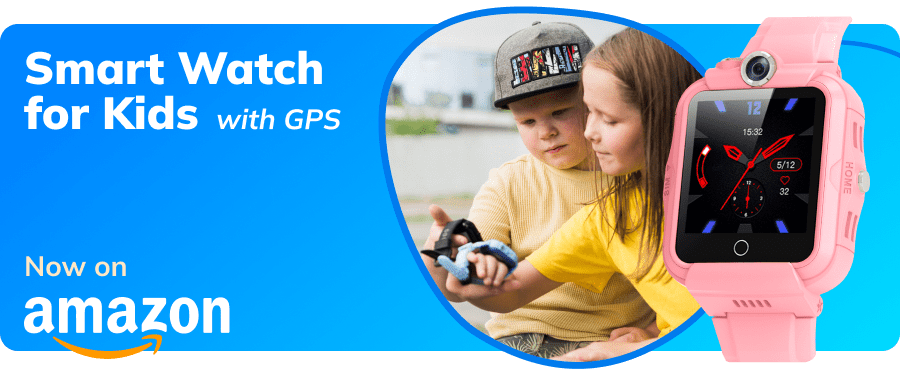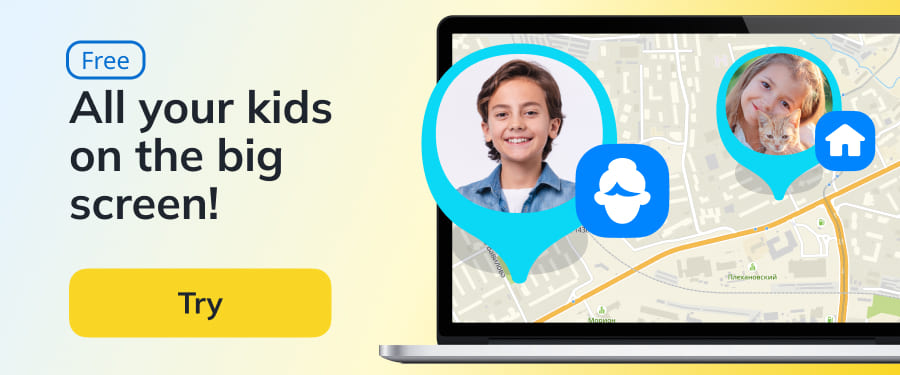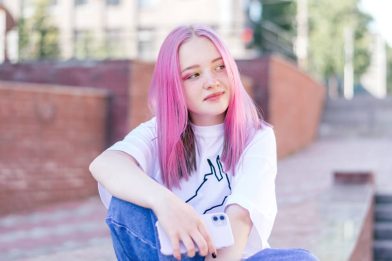Sephora Kids: Why Children Are Obsessed with Makeup—And What Parents Can Do About It
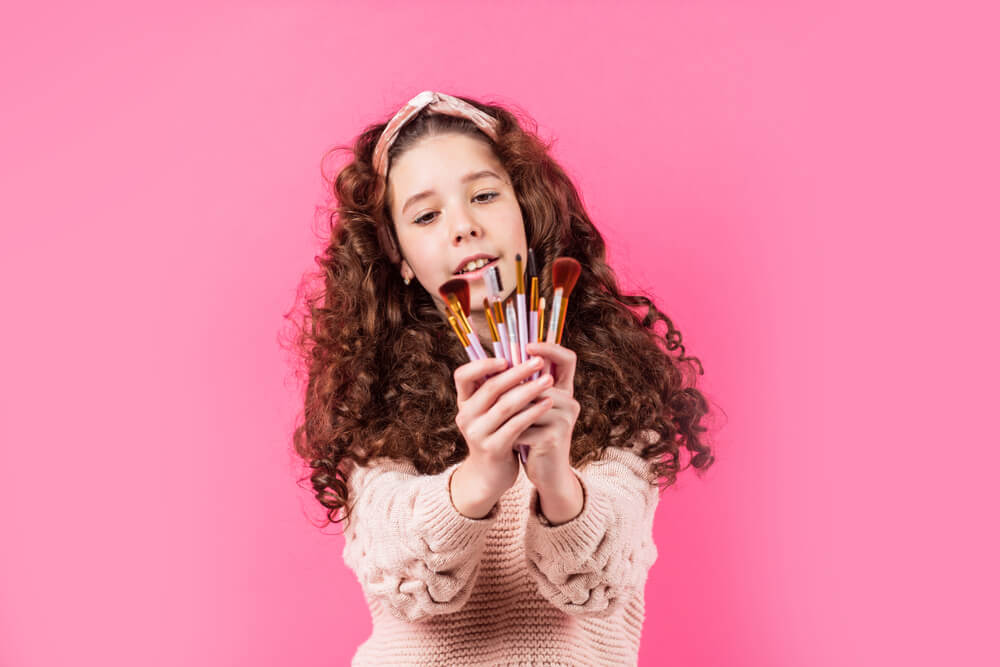
What’s behind this wave of kids, referred to as Sephora Kids, getting into adult beauty routines? Why do tweens and even elementary schoolers know the names of active ingredients better than most adults? And most importantly—should parents be worried? Let’s break it down.
Imagine walking into your favorite beauty store to restock on your favorite skincare products. But what you see is nothing short of a disaster—testers scattered all over the floor, shelves in disarray, staff looking overwhelmed, and a long line at the checkout full of 9 to 13-year-old girls clutching overflowing shopping baskets filled with serums, under-eye patches, and retinol creams. Sounds like a nightmare or straight out of a movie, right? Not at all. In the US, this has become a reality for most beauty stores like Sephora and Ulta Beauty.
The phenomenon that media and social networks have dubbed “Sephora Kids” has gone global in just a few months. The hashtag #sephorakids alone has gained over 600 million views on TikTok. And it all started with a viral video by student Chloe Grace on the hunt for the viral Drunk Elephant bronzer drops, who casually asked, “Has anyone else noticed all the kids buying up half of Sephora?” Soon after, journalists, experts, dermatologists, and, of course, concerned parents joined the conversation—everyone noticed.
Contents:
- Who Are the “Sephora Kids”?
- Why Sephora?
- So What’s the Problem?
- Why Did the Trend Blow Up Now?
- Even Neanderthals Were “Sephora Kids”
- A Vicious Cycle
- “Sephora Kids”—a Parenting Fail?
- What Parents Can Do (Hint: It’s Not Just Saying “No”)
- A Parent’s Guide: Safe Skincare for Beginners
- What Other Trends Are Shaping Gen Alpha
- FAQs
Who Are the “Sephora Kids”?
They’re mostly Gen Alpha girls (aged 7–14) who have flooded American beauty stores. And they’re not just coming in for lip gloss or sparkly eyeshadow. They bring lists for full-on anti-aging skincare routines: retinol creams, acids, peptides, under-eye patches, and so on, often leaving chaos in their wake, with parents footing the bill.
The term “Sephora Kids” was born on social media, with TikTok as ground zero for the trend. Under hashtags like #sephorakids and #sephorahaul, Gen Alpha shows off their purchases, test products, Skincare Smoothie recipes (where they mix different skincare products together before applying them), review brands, and compete to see whose skincare routine is more elaborate.
Why Sephora?
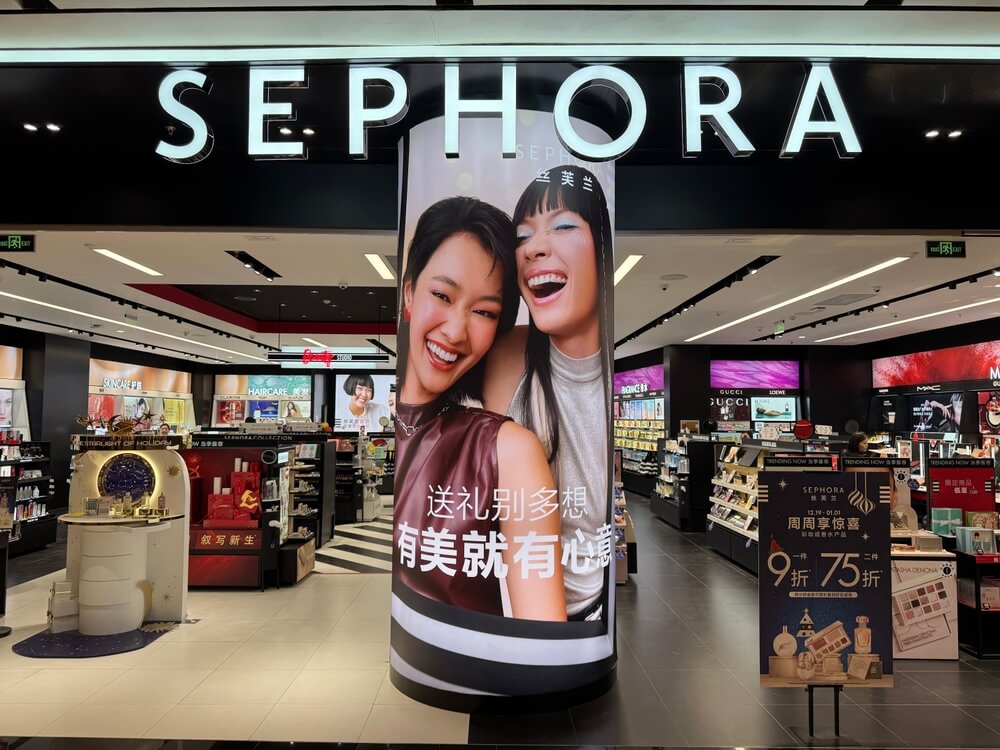
Robert Way/Shutterstock
Sephora is the largest retailer in the beauty and skincare industry, with easy access to both luxury and budget-friendly cosmetic brands. The brand’s welcoming policy—where kids can freely enter, test products, and film content for social media—has made Sephora the main “incubator” for a new generation of skincare fans. Here, kids learn to be beauty influencers—and simultaneously become paying customers. But not only do Sephora Kids buy makeup and skincare hauls in store, but they also place online orders using their parents’ credit cards, oftentimes racking up a large bill.
So What’s the Problem?
On one hand, being into skincare might seem harmless—or even beneficial. What’s so bad about kids learning to care for their skin? After all, we were taught to wash our faces, brush our teeth twice a day, shower regularly, and use lip balm.
But experts insist the “Sephora Kids” trend comes with very real risks.
First, there are the skin issues themselves. Children’s skin is thinner and more sensitive than that of adults. Anti-aging skincare with ingredients like retinol, acids, and peptides was designed for mature skin concerns, and its effects on children can be unpredictable.
Dermatologists explain that these products can cause irritation, allergic reactions, and damage the natural skin barrier. “When kids use anti-aging skincare, it can actually accelerate aging and lead to permanent scarring,” says Dr. Brooke Jeffy, member of the American Academy of Dermatology.
Second, the psychological toll. According to psychologists, getting into elaborate skincare routines at too young an age shifts the focus heavily to appearance, which can increase anxiety, dissatisfaction with one’s body, and even contribute to eating disorders and body dysmorphia. This is especially concerning for kids and teens still developing their identities and learning to accept their bodies.
No wonder California is already discussing a bill that would limit the sale of anti-aging products to minors—a direct response to growing concerns from both parents and professionals.
There’s also a deeper issue: values. When a 10-year-old thinks she needs collagen or retinol cream, it shows how distorted her perception of body and aging has become under the influence of beauty culture. More and more often, kids see skincare not as self-care, but as a way to meet unrealistic beauty standards.
Why Did the Trend Blow Up Now?

LightField Studios/Shutterstock
So why is this trend exploding now? The main culprit—and parents’ constant headache—is social media. But it’s not just that:
- TikTok is a catalyst. Social media doesn’t just show kids what’s trending—it builds communities where staying in the loop is everything.
- Packaging and aesthetics. Brands have long leaned into cute packaging and dreamy visuals that appeal to younger audiences. Products are desirable not only for their effects but for how they look.
- Accessibility. There are no clear legal restrictions on kids buying “adult” skincare. Technically, any teen can walk into a store and buy a chemical peel or anti-aging cream. This is left to the discretion of parents—and the kids themselves.
- The self-care culture. Today, self-care is marketed as a universal value—having a skincare routine is positioned as essential for good mental health. Kids absorb these messages just as easily as adults and are influenced to buy skincare products they don’t necessarily need.
The result? A new coming-of-age ritual wrapped in pretty jars, reinforced by cultural values, social media, and smart marketing. Who can resist?
Even Neanderthals Were “Sephora Kids”
It might seem like this obsession with skincare is some modern glitch. But—surprisingly—anthropologists disagree. Researchers have found evidence that the urge to decorate and beautify is nothing new in children. Archaeologists discovered a collection of seashells and obsidian fragments in a southern Italian cave, likely gathered by children. The evidence suggests they weren’t just collecting “pretty trinkets”—they probably wore them, imitating the adults.
Today, that behavior shows up differently: kids no longer gather shells, but they copy influencers’ skincare rituals. The psychological mechanism is the same—children learn social norms and codes by imitating others. If we once learned how to braid hair from our grandmothers, today’s kids follow 10-step Korean skincare routines from TikTok.
Wanting to be like adults is a normal—and important—part of development. Experts note that imitation is a natural stage in the development of identity. But in today’s world, the line between childhood and adulthood is blurring. Skincare jars are becoming a normal part of kids’ worlds—not something reserved for grown-ups. And that’s not okay.
A Vicious Cycle

Sorbis/Shutterstock
The media is also pointing to the influence of commercial culture. In recent years, the beauty and skincare industry has clearly shifted focus toward younger audiences. Because of this marketing strategy, Gen Alpha is exposed to beauty culture much earlier than necessary.
Why? Simple—loyalty and money. Experts say brands see kids as an investment. The earlier a child becomes a customer, the longer they’ll stay loyal—and the more profit they’ll generate over time.
This strategy is already paying off. According to Forbes, in 2023, American families with kids aged 6–12 bought 27.2% more skincare products than the year before. Families with teens aged 13–17 bought 28.6% more.
And where there’s demand, there will be supply. It all becomes a closed loop: social media inspires kids to get into skincare, brands capitalize on the trend with more products to boost profits, and kids become increasingly drawn into the game of “playing grown-up.”
“Sephora Kids”—a Parenting Fail?
Commenters under viral videos of very young girls reviewing Sephora hauls or applying adult makeup are quick to blame the parents: “What kind of mother lets this happen?” They claim it’s all the parents’ fault.
Of course, parents play a huge role in shaping their child’s worldview. But the 21st century changed everything—children now have access to entirely new sources of information. And it’s simply impossible to monitor everything a child consumes or comes into contact with online.
It’s essential to recognize that a child’s interest in skincare products or cosmetics isn’t a sign of poor parenting. It’s a natural part of growing up, especially during the teen years. However, it’s helpful to take a closer look at the context in which kids are growing up, which tends to be much quicker nowadays, thanks to social media. Parents should educate themselves about the latest trends and interests in the youth culture rather than ban these interests completely.
“Parents often underestimate how strongly social media influences children,” says parenting expert and psychologist Holly Brooker. She recommends not banning makeup outright, but instead talking with your child about what they actually need and what’s just a passing trend.
Sociologist and University of British Columbia professor Laura Hurd emphasizes that children absorb a lot from adults, including their fears, such as the fear of aging. “We’re selling the idea that aging is the enemy we must fight. Kids are just picking up on that,” she explains.
In other words, it’s not that parents are “careless” or have “lost control.” We’re all living in a world where eternal youth and flawless beauty have become the standard. That’s something we need to understand, accept, and openly discuss with the younger generation.
What Parents Can Do (Hint: It’s Not Just Saying “No”)
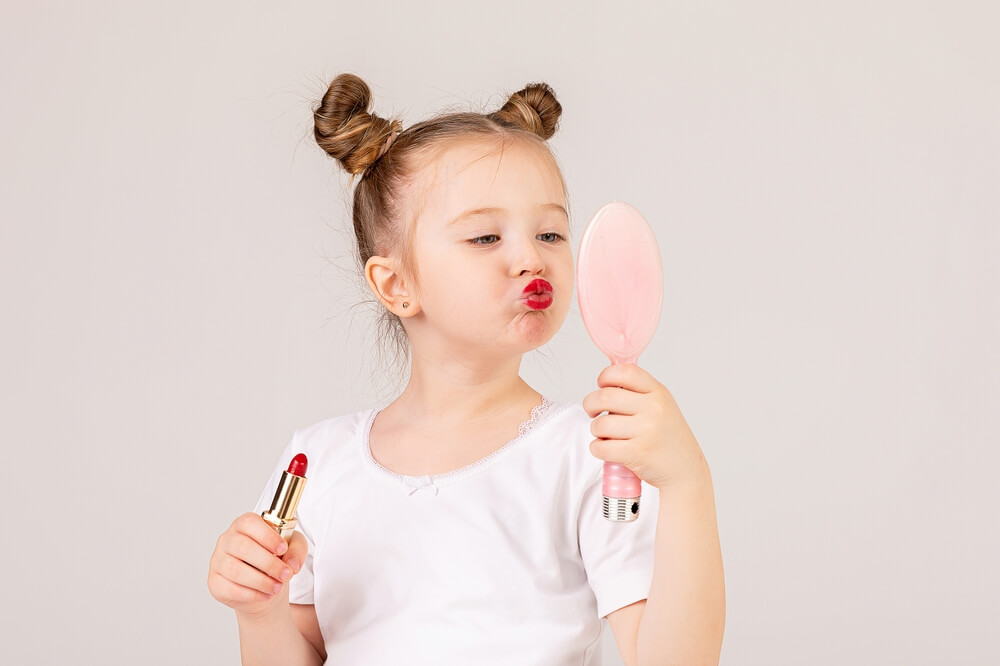
Irina Mikhailichenko/Shutterstock
The most natural reaction when you hear your 10-year-old talking about chemical peels, asking for personalized skincare consultations from professionals, or worse, reaching for your skincare products is to yell, “Are you serious? Put that down!” But, as with any ban, the usual effect is the opposite—curiosity only grows.
Psychologists emphasize that bans without explanation rarely work. What matters most is engagement. Talk to your child and explain things using both simple terms and real facts. Let them know the boundaries about using skincare products and how beauty doesn’t always come from makeup or products. The key is to do this calmly, without judgment or panic.
Here’s what’s worth discussing:
- Skin is an organ that changes with age. What works for adults may not be safe for kids. Anti-aging products can actually be harmful to young skin. Talk with your child about how skin works, why skincare matters, and how kids’ skin is different from adults’. This can help shed some light on the bigger issue and encourage kids to think critically.
- Aesthetics ≠ Health. Through ads and TikTok, the skincare industry often sells an image of perfect skin, but the real goal of skincare is health, not the perfect selfie.
- Listen to your body. If the skin reacts to skincare products with redness, flaking, or irritation, that’s not something to “push through”—it’s a sign the product isn’t right.
- Don’t panic. Young teens with an interest in beauty often go through it as a phase of self-exploration. Your child won’t become a victim of the beauty industry overnight just because they try a Skincare Smoothie or GRWM (“Get Ready With Me”) video or two. Once you notice this interest, you’ve got time to talk it through.
If you notice that your child enjoys watching these types of videos, where influencers make skincare smoothies or GRWM content, but doesn’t ask to buy the products in the videos, there is no reason to worry. Rather than being direct (and accusatory) about why your child cares about this content, try a gentler approach. Ask, “What do you like about these videos?” or “Do you know what that product does?” to support their beauty interests and curiosity.
Remind your child regularly that what matters is not how “perfect” their skin looks, but how they treat themselves and the world—with kindness, respect, and care. And let them know that many beauty influencers use filters—in real life, they have the same skin concerns as anyone else.
A Parent’s Guide: Safe Skincare for Beginners
Dermatologists explain that the best skincare routine for teens with almost any skin type is simple—a good cleanser, a basic moisturizer, and SPF 30. Everything else is marketing noise and social-media-driven overconsumption.
Here are a few tips to help you choose the right skincare for your tween or teen (note: these are general tips and don’t replace personalized advice from a dermatologist):
The three essentials of kids’ skincare:
- Gentle cleansing (gels or foams without harsh surfactants)
- Basic moisturizing (creams with minimal ingredients, no acids or retinol)
- SPF (sun protection is the #1 must-have for healthy skin)
What to avoid:
- Retinoids and retinols
- Products with strong essential oils or added fragrances
- Anti-Aging products
- Vitamin C
- Exfoliating acids
- Glycolic acid
- Ascorbic acid
- Hyaluronic acid
- Salicylic acid
How to choose skincare:
- Always read the ingredient list: the shorter and more understandable, the better.
- Look for labels like “suitable for teens” or “for sensitive skin.” Pharmacy brands are often great options—they’re safe from birth and don’t rely on age-based packaging gimmicks. Plus, they often look “grown-up” enough to appeal to teens.
- Buy only from trusted retailers—counterfeits often contain harmful ingredients.
- Set a good example. Let your child see that self-care is about kindness, not perfection, and that a bare face in the morning is perfectly normal.
To better understand what ingredients can be used in cosmetics, check out the guidelines from the Food and Drug Administration. For further information about what products are considered to be child-friendly, check out the guidelines from the CPSC (Consumer Product Safety Commission). Being informed = keeping your child’s skin healthy.
Beyond picking the right products, teaching your child how to use them safely is key. If your teen is already experimenting with makeup, make sure they know how to remove it properly. Dermatologists warn that skipping this step (or doing it incorrectly, without using micellar water or gentle cleansing milk) can lead to skin problems, especially if breakouts are already present.
Your enemy isn’t cosmetics or skincare products—it’s using the wrong products or applying them unsafely. Talk to a dermatologist to find what works for your teen. And teach your beauty-loving kids to take care of their skin thoughtfully. Also, help them build critical thinking—not everything they see online reflects reality.
What Other Trends Are Shaping Gen Alpha
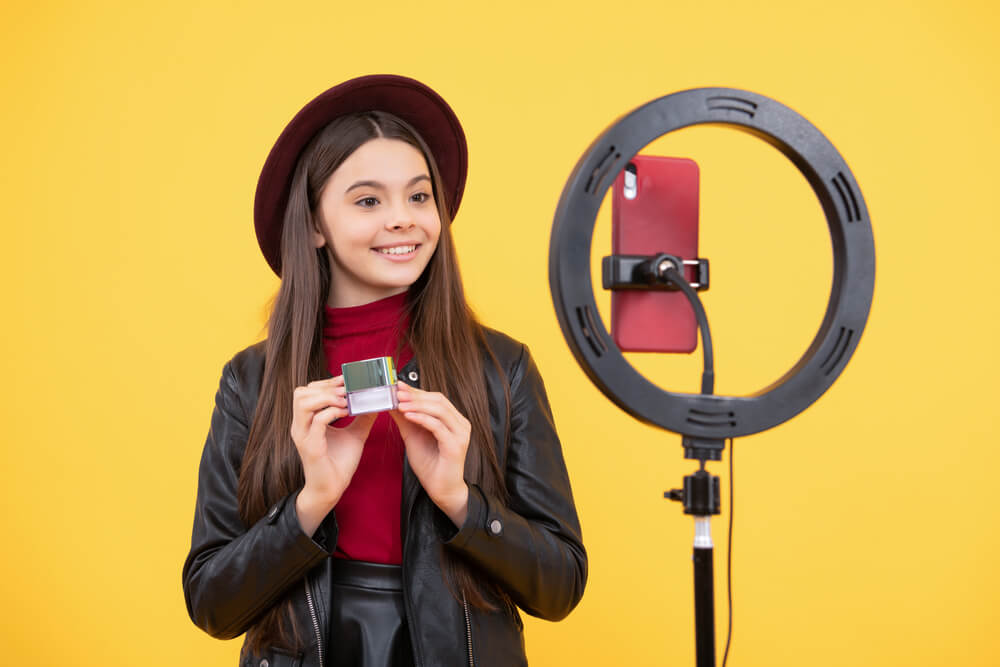
Red Fox studio/Shutterstock
The “Sephora Kids” phenomenon isn’t the only one of its kind. Gen Alpha is shaping an entirely new consumer and cultural landscape, and parents are often caught off guard by the speed of emerging trends.
From skincare obsessions to memes and food crazes, here are a few other youth-driven phenomena to be aware of:
- iPad Kids — a nickname for children raised on screens from the cradle. They navigate modern tech with ease and have a totally different way of thinking. Experts warn that excessive screen time can negatively impact attention spans and emotional development.
- Italian Brainrot — a wave of absurd humor on TikTok and Reels. Kids create and share surreal videos with bizarre characters and plots. It’s their way of expressing themselves and blowing off steam.
- Shopping trends: Spicy Korean Samyang noodles, trendy Owala water bottles, and hydration gadgets like Cirkul are top wish list items—all inspired by influencers.
All of these trends, such as “Sephora Kids,” share a commonality: today’s kids and teens are increasingly influenced by online culture and their peers rather than traditional authorities like family or school. That’s not inherently bad—it’s just a new reality. As a parent, staying informed and interested in your child’s world helps you support them where it really counts.
FAQs
Do Sephora Kids still exist?
Yes, Sephora Kids still exist, buying out popular brand products from Drunk Elephant and Glow Recipe and making skincare smoothies on social media.
Is 13 a Sephora Kid?
Yes, at 13 years old, a teen is still considered a Sephora Kid if they buy anti-aging skincare products or mature cosmetic products that are not appropriate for their age.
What is the minimum age for Sephora?
There is no minimum age for customers who can enter and purchase items from Sephora.
Is it Sephora or Zipporah?
Sephora is a beauty retail store, while Zipporah is famously known for being the wife of Moses in the Bible.
Cover image: Just dance/Shutterstock
Проверьте электронный ящик

